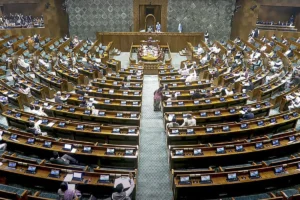
Renewable Subsidies, Higher Tariffs On Coal
A study conducted by two IMF economists Shows that combining renewable energy subsidies and increased coal tariffs will reduce emissions in India by over one-third by 2030 compared to the existing policy.
According to the analysis carried out by Margaux MacDonald and John Spray, “The two measures would also reduce coal imports by 14% by 2030”. This would increase energy security and increase resilience to global swings in energy prices.
The report, which was published on Tuesday, notes that while India has made considerable strides towards fulfilling its emission reduction targets under the Paris Agreement, the country’s overall greenhouse gas (GHG) emissions will still rise by more than 40% by 2030 under the country’s existing policies.
“A more rapid scaling up of present policies could help cut emissions considerably over the medium term and move India closer to a route to net zero by 2070”, it said.
“A minor increase in short-term emissions may be necessary to achieve poverty reduction and energy security targets”, it added.
A Steady Increase In subsidies For Use Of Renewable Energy
The two economists claimed that scaling up existing measures could result in a different emissions trajectory.
In addition to the numerous targeted policies that India has concentrated on, “one of our ideas includes a steady increase in subsidies on the use of renewable energy paired with greater taxes on carbon,” the statement read.
Also, this would contribute to a quicker decline in the dependency on imported fuels, ensuring that everyone has access to energy, and reducing the harmful impacts of pollution on human health.
Technology transfer and external climate financing would reduce costs and guarantee sustainability.
Higher Tariffs On Coal
According to IMF research, combining renewable subsidies with higher coal prices (approximately comparable to increasing India’s current excise rate on coal) will lead to nearly one-third lower emissions by 2030 than present policies.
“The objective of 50% non-fossil fuel electrical capacity is surpassed in this scenario by allowing coal power to gradually decline and gradually increasing renewable energy. Under such a policy, not only would the share of renewables climb dramatically but overall electricity supply would increase,” it stated.
Also read: New Regulations Bring Virtual Assets Under Money Laundering Laws
Although this strategy has obvious environmental advantages, economists predict that it will cause enterprises and consumers to pay more taxes, which will cause a minor decline in the amount of real gross domestic product (compared to forecasts based on present policies).
“Nonetheless, sufficient tax revenues would be increased to compensate the most vulnerable citizens to the point that the general direction of the policy would be progressive. Also, this approach has a lower distortionary cost than alternative options,” they added.
“Reduced emissions would have several advantages. Under this policy scenario, increasing the use of renewable energy while allowing coal use to decline will result in a 2.5% reduction in pollution, save lives, and result in fewer missed work and school days. Also, it would reduce coal imports by 14% by 2030, strengthening energy security and increasing resilience to regional and global swings in energy costs”, IMF research read.
(With input from PTI)
To read more such news, download Bharat Express news apps





















